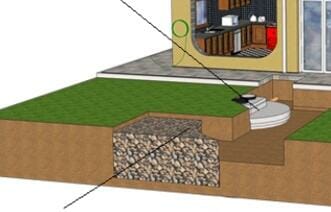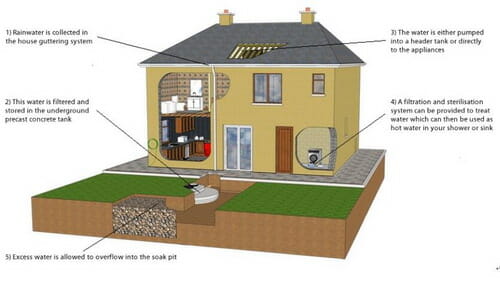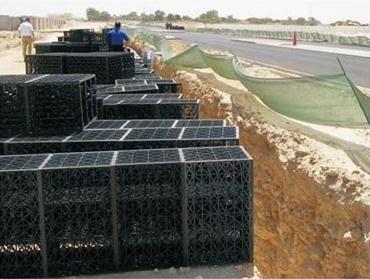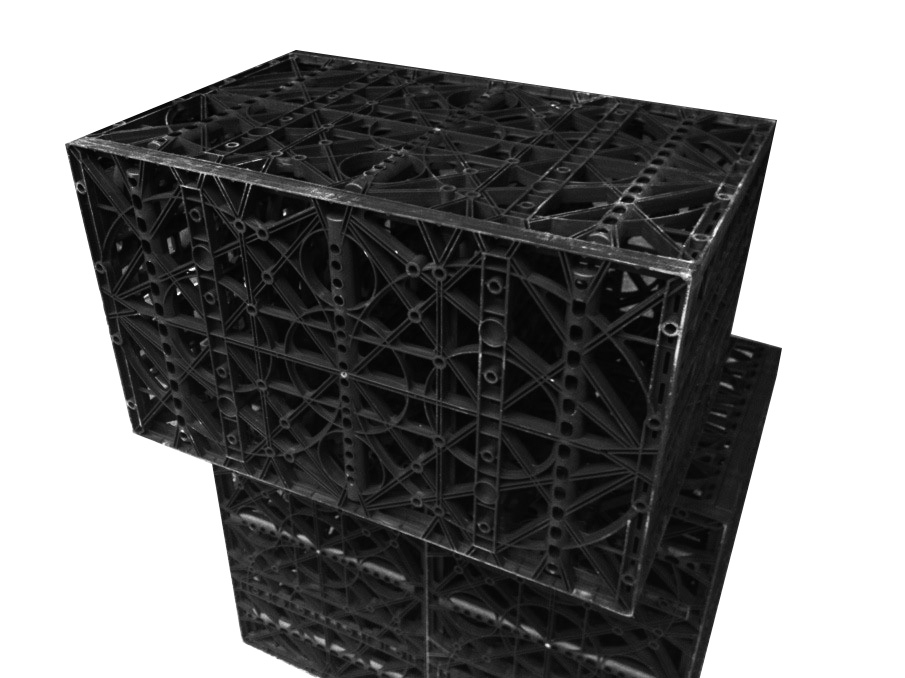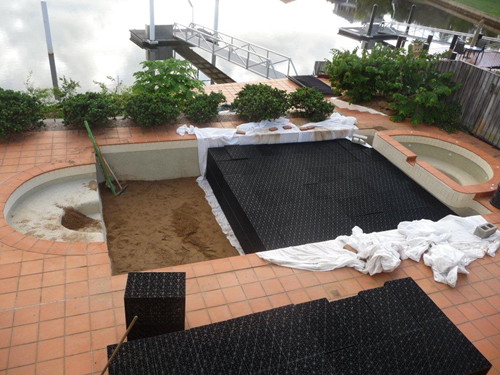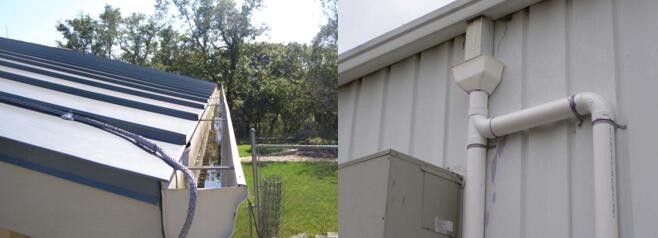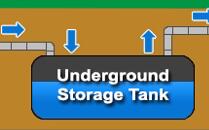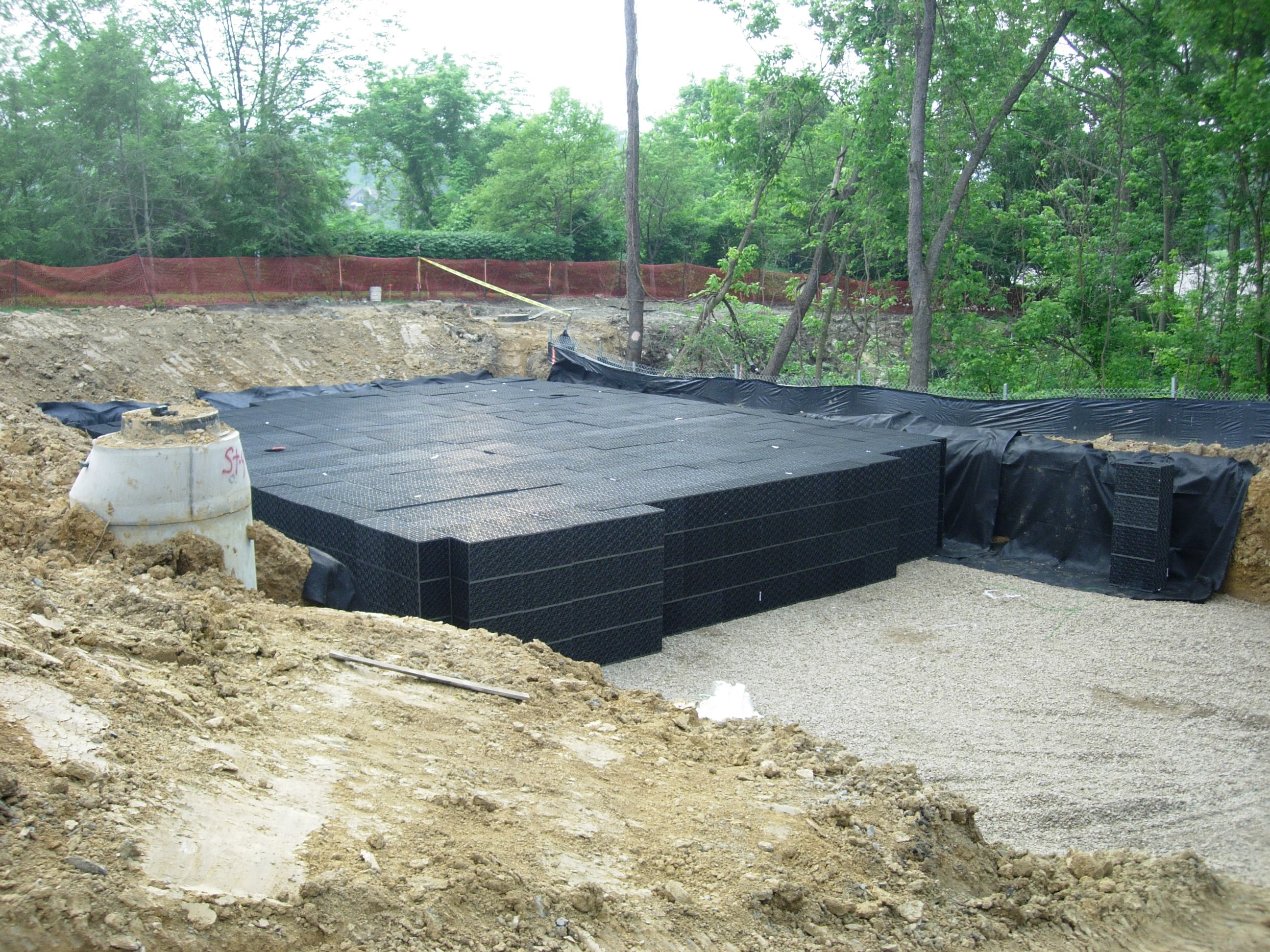Learn How to Design a Rainwater Harvesting System
Rainwater harvesting systems can be as simple as a rain barrel for garden irrigation at the end of a downspout, or as complex as a domestic potable system or multiple end-use systems at a large corporate campus.
Basic Rule For Sizing
The basic rule for sizing any rainwater harvesting system is that the volume of water that can be captured and stored (the supply) must equal or exceed the volume of water used (the demand).
The variables of rainfall and water demand determine the relationship between required catchment area and storage capacity. In some cases, it may be necessary to increase catchment surface area by addition to capturing enough rainwater to meet demand. Cistern capacity must be sufficient to store enough water to see the system and its users through the longest expected interval without rain.
Determine What The Captured Water Be Used For
Will you be using the rainwater for irrigation only? If so, a rough estimate of demand, supply, and storage capacity may be sufficient. On the other hand, if rainwater is intended to be the sole source of water for all indoor and outdoor end uses, a more precise calculation will ensure adequate supply.
Determine How Much Water Can Be Captured
In theory, approximately 0.62 gallons per square foot of collection surface per inch of rainfall can be collected. In practice, however, some rainwater is lost to first flush, evaporation, splash-out or overshoot from the gutters in hard rains, and possibly leaks.
Rough collection surfaces are less efficient at the conveying water, as water captured in pore spaces tends to be lost to evaporation.
Also impacting achievable efficiency is the inability of the system to capture all water during intense rainfall events. For instance, if the flow-through capacity of a filter-type roof washer is exceeded, spillage may occur.
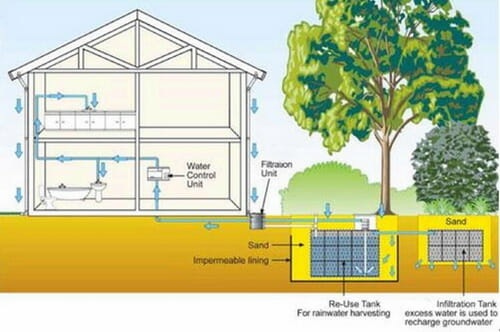
Additionally, after storage tanks are full, rainwater can be lost as overflow.
For planning purposes, therefore, these inherent inefficiencies of the system need to be factored into the water supply calculation. Most installers assume an efficiency of 75 percent to 90 percent.
Determine the Collection Surface
The collection surface is the “footprint” of the roof or structure. In other words, regardless of the pitch of the roof, the effective collection surface is the area covered by collection surface (length times width of the roof from eave to eave and front to rear). Obviously, if only one side of the structure is guttered, only the area drained by the gutters is used in the calculation.
Calculate the Volume of Rainfall
To ensure a year-round water supply, the catchment area, and storage capacity must be sized to meet water demand through the longest expected interval without rain.
If the rainwater harvesting system is intended to be the sole water source, the designer must size the system to accommodate the longest anticipated time without rain, or otherwise plan for another water source, such as a well backup or hauled water.
Also, rainfall from high-intensity, short duration rainfall events may be lost to overflow from storage tanks or splash out from the gutters.
Although these intense rainfall events are considered part of the cumulative annual rainfall, the total available volume of such an event is rarely captured.
Another consideration is that most rainfall occurs seasonally; annual rainfall is not evenly distributed throughout the 12 months of the year. The monthly distribution of rainfall is an important factor to consider for sizing a system.
Estimate Indoor Water Demand
A water-conserving household will use between 25 and 50 gallons per person per day. Households served previously by a water utility can read monthly demand from their meter or water bill to find monthly demand for purposes of building a new rainwater harvesting system. Divide the monthly total by the number of people in the house, and the days in the month to get a daily per capital demand number.
Estimating Outdoor Water Demand
Outdoor water demands peak in hot, dry summer. In fact, as much as 60 percent of municipal water demand in the summer is attributable to irrigation. The water demands of a large turfgrass area almost always preclude the sole use of harvested rainwater for irrigation.
For planning purposes, historical evapotranspiration can be used to project potential water demands. Evapotranspiration is the term for water use by plants, the combination of evaporation from the soil and transpiration from the plant leaves.
It is recommended to install landscapes of native and adapted plants, and also ascribe to the xeriscaping principles. A water-wise landscape can be quite attractive while conserving water, and demanding less care than a garden of non-native or non-adapted plants.


